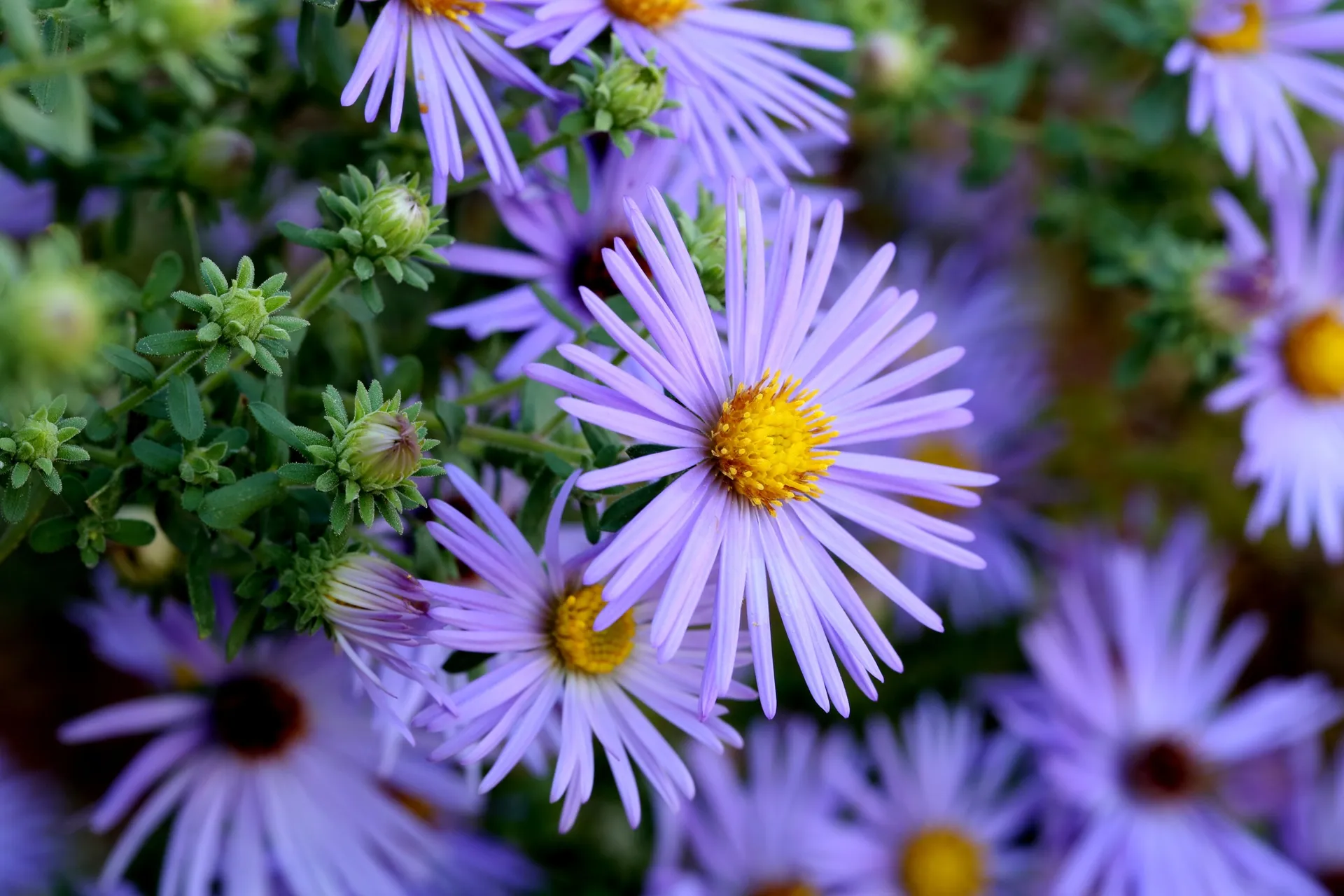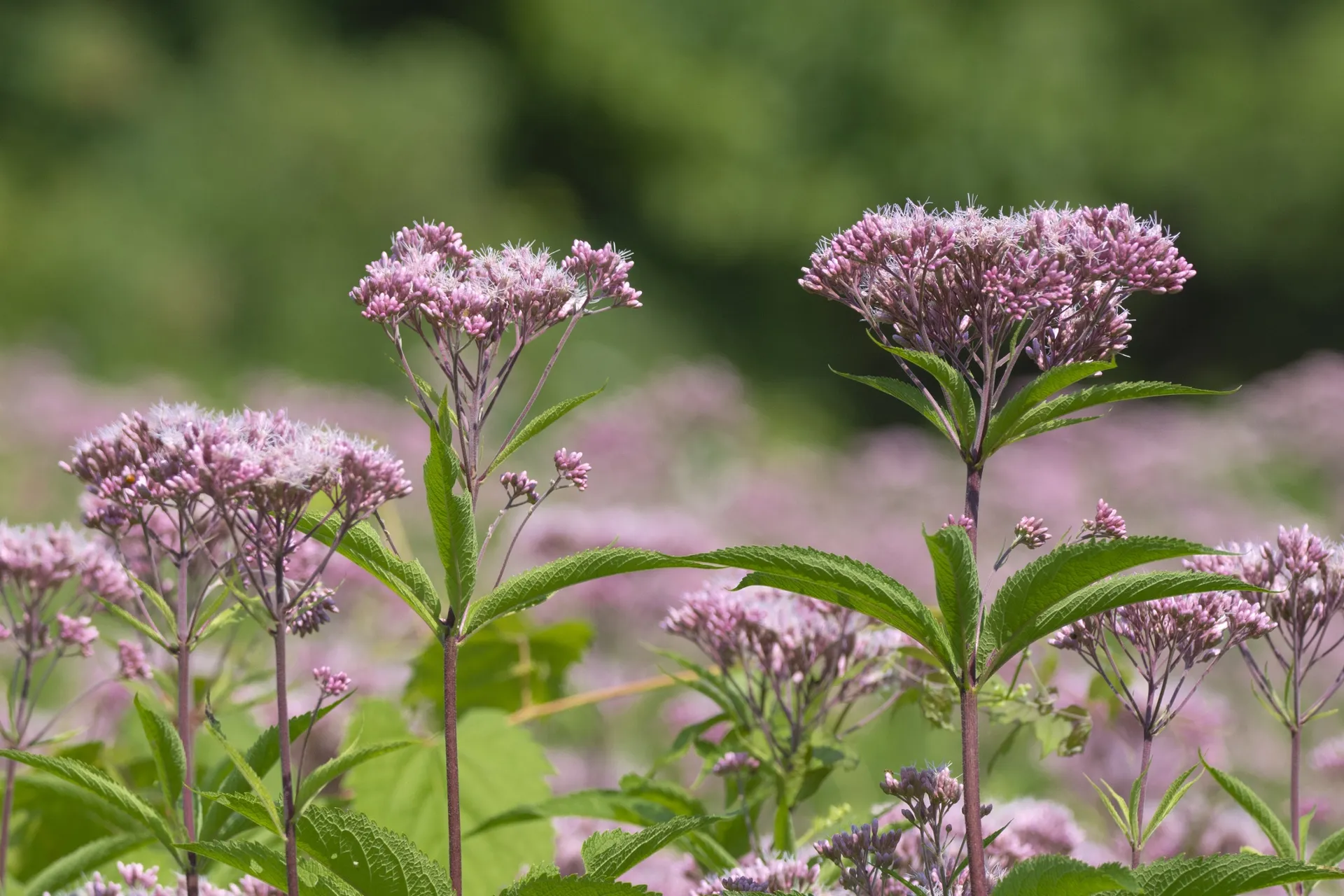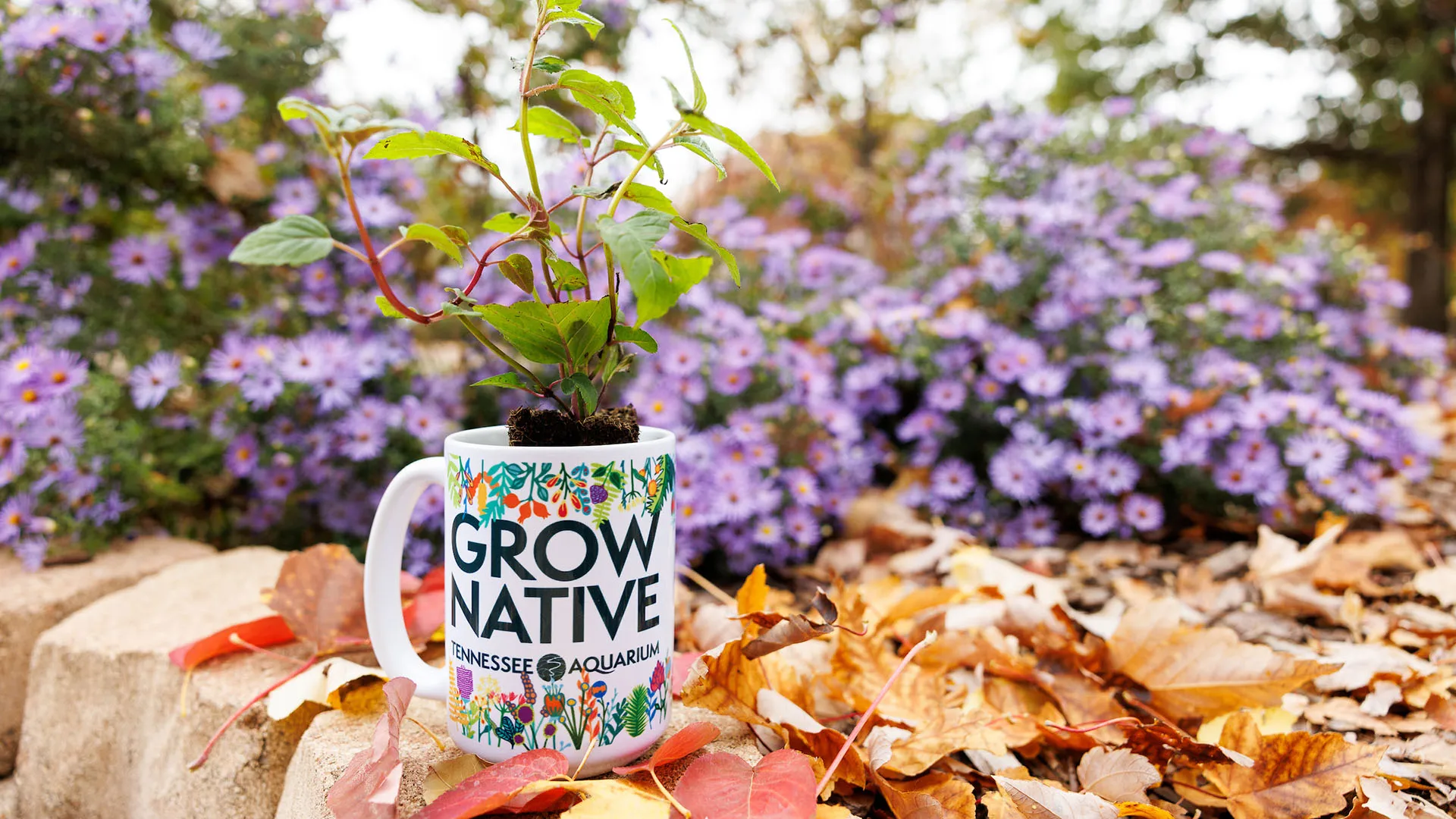When it comes to gardening, spring often gets all the attention. But did you know that Fall can be an even better time to plant native plants in your yard?
According to Aquarium Horticulturist II (and native plant expert) Jenna Paler, planting in autumn has numerous advantages, particularly when fostering a healthy, sustainable, and low-maintenance garden. Here’s why Fall is the perfect season for planting native species.
Better root establishment
Fall planting allows native plants to focus on root growth while the rest of the plant is dormant.
During spring, plants expend energy to produce new leaves and flowers. In fall, cooler air temperatures but still warm soil allow roots to develop more extensively before winter. Well-established root systems help plants better survive winter’s challenges and flourish when spring arrives.
Fall usually heralds plenty of rainfall after a dry summer, which also helps plants establish healthy roots.
You might think that the arrival of cold weather means it’s too late, but that isn’t so, says Paler.
“I’ve planted in December or January,” she says. “As long as you can dig, they’ll probably do fine.”
Fewer pests and diseases
As temperatures cool down, the activity of garden pests and diseases begins to decline. Your Fall-planted native plants face fewer threats, allowing them to establish themselves without the stress of battling typical spring and summer pests.
Encourages wildlife
Native plants are crucial to maintaining biodiversity, as they support local ecosystems by providing food and habitat for birds, pollinators, and other wildlife.
By planting in the Fall, you’re preparing your garden to offer these vital resources as soon as spring returns. Native plants bloom at the correct times to support local species, and by planting in the autumn, you’re ensuring they’ll be ready to attract pollinators as early as possible.
Cost-effective gardening
Many garden centers offer discounts on plants in the Fall as they look to clear out inventory before winter. Fall can provide an excellent opportunity to stock up on native species at lower prices.
“Plants on the clearance rack might not look very good up top, but if the root systems are good and you put them in the ground, they’ll look fine next season,” Paler says.


Why native plants?
Native plants are uniquely adapted to your region’s climate, soil, and local wildlife, making them easier to care for. They require less water, fertilizer, and pesticides than non-native species. Native plants help create a healthier, more sustainable environment by supporting local pollinators, improving soil quality, and reducing water runoff.
Best native plants to plant in fall
While the specific native plants you choose will depend on your region, some popular fall plantings for East Tennessee include:
· Asters
· Monarda
· Larger plants like trees and shrubs
· Bulbs
· Native grasses
· Goldenrod
· Sunflowers
· Joe-Pye Weed
